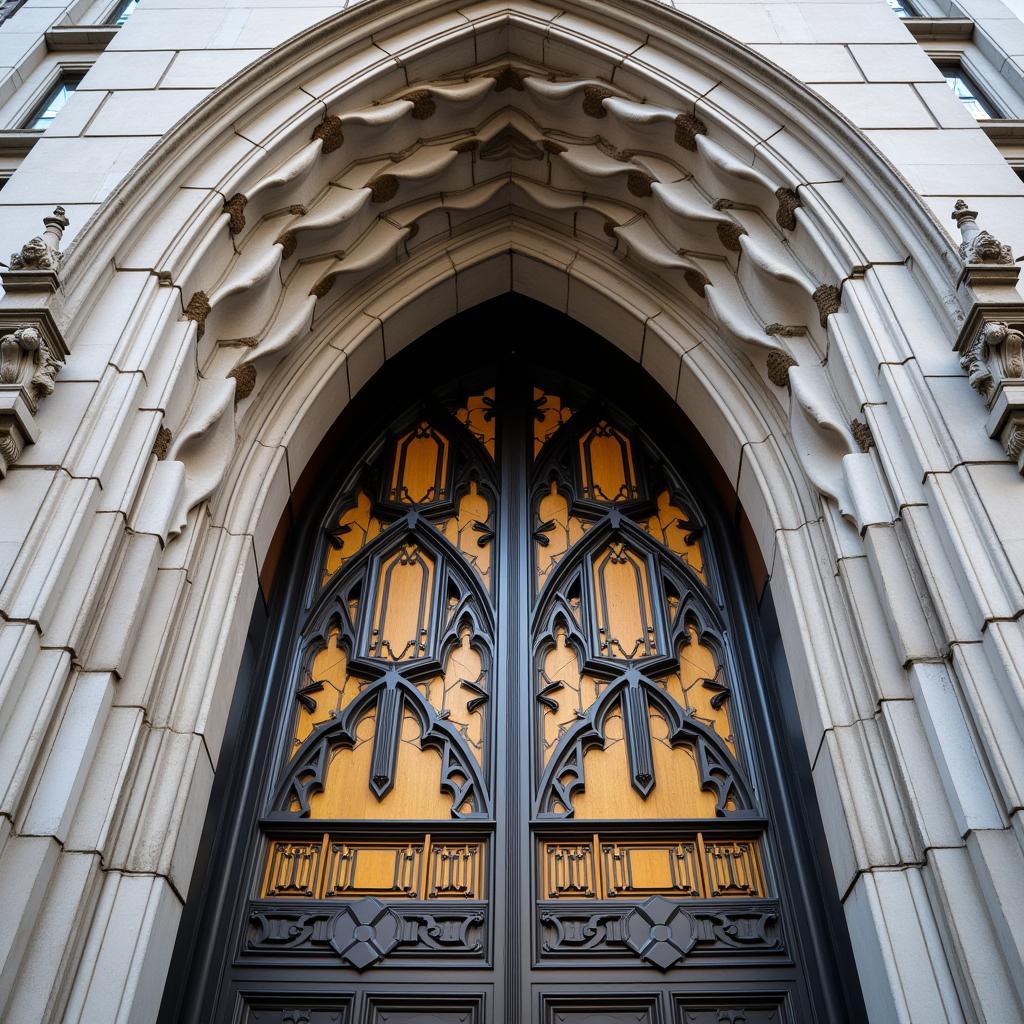Jewish Art Posters: A Window into History, Culture, and Faith
Jewish Art Posters are a fascinating blend of artistic expression and cultural identity. These powerful visual narratives have played a significant role in shaping Jewish history, tradition, and social consciousness. From the early days of Jewish settlements to the modern era, these posters have served as a means of communication, education, and inspiration. This article will delve into the world of Jewish art posters, exploring their evolution, artistic styles, themes, and impact on Jewish life.
Exploring the Rich History of Jewish Art Posters
The origins of Jewish art posters can be traced back to the 19th century, a period of rapid modernization and societal change in Jewish communities worldwide. As Jewish populations became increasingly urbanized and integrated into broader societies, the need for visual communication grew. Posters emerged as an effective tool to disseminate information, promote events, and convey social messages within Jewish communities.
Early Jewish Art Posters: A Reflection of Identity
Early Jewish art posters often featured traditional religious imagery, including the Star of David, Torah scrolls, and biblical scenes. These designs served as a visual affirmation of Jewish identity and heritage, providing a sense of continuity and connection to historical roots. They were widely used for religious ceremonies, festivals, and educational purposes, reminding Jewish communities of their cultural values and traditions.
The Rise of Modernism: Embracing New Artistic Styles
The early 20th century saw the emergence of modernism in Jewish art, mirroring broader artistic trends in the West. Jewish artists began experimenting with new visual styles, incorporating elements of cubism, expressionism, and surrealism. This shift in artistic expression reflected the changing social and political landscape of Jewish life, with themes of immigration, social justice, and Zionism emerging as prominent motifs in poster art.
Exploring the Diverse Themes of Jewish Art Posters
Jewish art posters encompass a wide range of themes, reflecting the complexities of Jewish life and the challenges faced by Jewish communities throughout history. These themes can be broadly categorized as follows:
Religious and Ritualistic Themes:
- Festivals and Celebrations: Posters promoting festivals such as Passover, Hanukkah, and Rosh Hashanah often featured traditional imagery, symbolic objects, and colorful designs to capture the festive spirit of these celebrations.
- Synagogue Life: Posters depicting scenes from synagogue life, such as prayer services, Torah reading, and religious ceremonies, aimed to educate and inspire members of the community.
Social and Political Themes:
- Zionism: Posters promoting the Zionist movement and the establishment of the State of Israel frequently featured imagery of the Land of Israel, historical figures, and Zionist ideals.
- Social Justice: Posters advocating for social justice and addressing issues such as anti-Semitism, human rights, and equality were often used to raise awareness and mobilize Jewish communities.
Cultural and Artistic Themes:
- Jewish Identity: Posters exploring themes of Jewish identity, heritage, and cultural values were used to foster a sense of belonging and pride among Jewish communities.
- Jewish Literature and Art: Posters showcasing Jewish literature, music, theater, and visual arts were used to promote cultural events and support Jewish artists.
The Impact of Jewish Art Posters: Shaping Jewish Culture and Identity
Jewish art posters have had a profound impact on Jewish culture and identity. They have served as a powerful means of communication, education, and inspiration, helping to shape Jewish social consciousness and preserving cultural traditions.
Communication and Dissemination:
- Reaching the Community: Posters provided a visual means of disseminating information, promoting events, and connecting with Jewish communities across geographical boundaries.
- Sharing Knowledge: Posters were used to educate the public on Jewish history, religious teachings, and cultural traditions.
Inspiration and Mobilization:
- Empowering Communities: Posters played a role in mobilizing Jewish communities to address social and political issues, such as anti-Semitism and the struggle for Jewish self-determination.
- Preserving Heritage: Posters helped preserve Jewish cultural traditions, promoting a sense of continuity and identity among generations.
The Legacy of Jewish Art Posters: A Timeless Art Form
Jewish art posters remain an integral part of Jewish cultural expression and a testament to the resilience and creative spirit of Jewish communities. They offer a unique window into Jewish history, tradition, and social consciousness, providing valuable insights into the struggles and triumphs of Jewish life.
“The art of poster design is a potent form of communication, capable of inspiring, educating, and mobilizing people,” states Dr. Miriam Cohen, a renowned art historian specializing in Jewish art. “Jewish art posters, in particular, have played a vital role in preserving cultural identity, promoting social justice, and shaping Jewish history.”
Jewish art posters continue to inspire and inform audiences around the world, serving as a bridge between past and present, culture and identity. Their timeless power lies in their ability to transcend language and cultural barriers, making them a universal form of artistic expression.
Frequently Asked Questions (FAQ)
Q: Where can I find examples of Jewish art posters?
A: Many museums and archives around the world house collections of Jewish art posters, including the Jewish Museum in New York City, the Israel Museum in Jerusalem, and the Museum of Jewish Heritage in New York City. Online resources, such as the website of the Jewish Art Network, also offer a wide range of examples.
Q: What are some of the most famous Jewish art posters?
A: Some of the most famous Jewish art posters include:
- “The Maccabees” (1940s): This poster by Russian-American artist Marc Chagall depicts a group of Jewish fighters against the Seleucid empire, symbolizing the struggle for Jewish independence.
- “The Dreyfus Affair” (1899): This poster by French artist Henri de Toulouse-Lautrec depicts the trial of Captain Alfred Dreyfus, a Jewish officer accused of treason, highlighting the issue of anti-Semitism in French society.
- “We Shall Overcome” (1960s): This poster by American artist Norman Rockwell depicts a group of African American activists marching for civil rights, using imagery that resonates with the Jewish struggle against discrimination.
Q: How can I learn more about Jewish art posters?
A: There are many resources available to learn more about Jewish art posters, including books, articles, websites, and documentaries. You can also attend lectures, workshops, and exhibitions dedicated to this art form.
Q: What makes Jewish art posters unique?
A: Jewish art posters are unique in their ability to combine artistic expression with cultural identity. They often feature traditional imagery, symbolic objects, and themes that are deeply rooted in Jewish history, tradition, and faith. They are a powerful reflection of the Jewish experience, highlighting both the challenges and triumphs of Jewish life.



